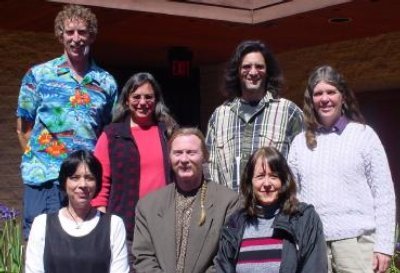- Editor
- Posted On
Watershed community meeting in Lucerne
Citizens of Lucerne recently approached Dills to see if the Coordinated Resource Management and Planning (CRMP) process might work for their watershed, as it has in so many other areas of the county.
This voluntary, grassroots approach to land management and planning originated in the 1950s and is still an effective problem-solving method today.
This system of management has seen successful throughout the entire state, but perhaps nowhere more than Lake County. Many of the sub-watersheds in the Upper Cache Creek Watershed have formed successful groups; if the citizens of Lucerne decide to adopt the process, it would be the tenth such group in the county.
The neighboring Nice Watershed Group was recently nominated for the Stars of Lake County Volunteer Group Award, and has been extremely instrumental in cleaning-up the Nice area.
It also was influential in the passage of the new OHV ordinance. The group's concerns about erosion and subsequent damage to water quality, caused by illegal off-road vehicles, put a spotlight on this serious trespassing issue.
Other groups have also made valuable contributions to their local watersheds.
The Big Valley CRMP, Lower Lake Watershed Council, Middle Creek CRMP and Scotts Creek Watershed Council all participate in annual creek cleanups in their areas. Along with watershed group volunteers, local high school students, 4-H members, Boy Scouts and other concerned community members participate in these events. It's hard work, but very rewarding, and their dedication contributes to the reduction of illegal dumping.
The different groups may focus on different concerns, but the approach is the same. Volunteers work together with the tribal, city, county, state, and federal governments, their neighbors, local businesses and other service organizations to solve local problems at the local level, in a cooperative manner.
The Scotts Creek Watershed Council worked with the West Lake Resource Conservation District, Bureau of Land Management, State Department of Conservation, and private landowners to secure grants to complete a fire break on the ridge line of Cow Mountain. They also held meetings for fire safety education.
The Lower Lake Watershed Council works with award-winning Carle High School students, and has developed a student water quality monitoring team. The group is also in the process of implementing a stream-bank restoration project. The project entails working with local, county, state, and federal agencies, but is accomplished by volunteers at the local level.
The Middle Creek CRMP quite literally dug an abandoned earth moving equipment out of the creek. These dedicated volunteers worked diligently with county officials and local business owners to see this task accomplished.
The group also designed and installed road signs along a dangerous stretch of road for the protection of wildlife and unsuspecting motorists. In addition, they join together with the Scotts Creek Watershed Council to support West Lake RCDs very popular "Kids in the Creek" program.
The Chi Council for the Clear Lake Hitch monitors and collects data on this historic fish. Volunteers all over the county stop at bridges and creekside turnouts to track the Clear Lake Hitch, found only in Lake County.
Volunteers from all of the groups in the Upper Cache Creek Watershed trained and participated in a citizens' water quality monitoring team. This team was given special recognition by the Upper Cache Creek Watershed Alliance at the recent Year in Review; an event that celebrates and highlights the accomplishments of the watershed volunteers throughout the entire county.
The list of contributions that East Lake and West Lake Resource Conservation Districts and their various watershed groups make to the communities in Lake County is long and impressive. Citizens of Lucerne who attend this meeting may choose to adopt the same path to problem-solving success that these other groups have enjoyed.
Voris Brumfield, code enforcement manager for the County of Lake, will also address those in attendance. Brumfield will report actions the county will be taking on Morrison Creek and other areas.
Don't miss this informative meeting at the Lucerne Alpine Senior Center, located at 10th and County Club Drive in Lucerne.
Be sure to mark March 7, 6:30 to 8 p.m. on your calendar, and plan to attend.
Contact Dills at 263-4180 x12 for questions or additional information.
{mos_sb_discuss:2}











